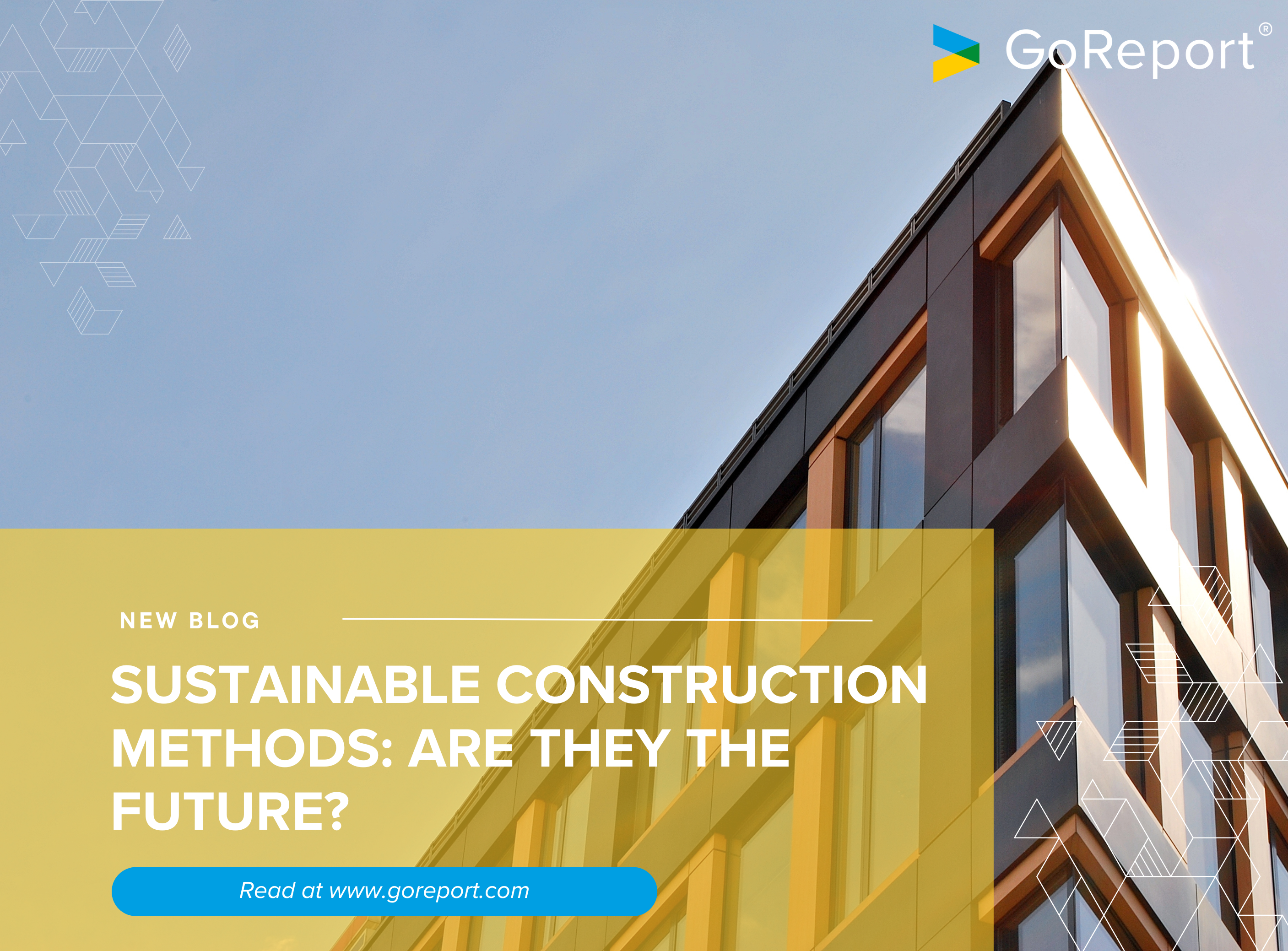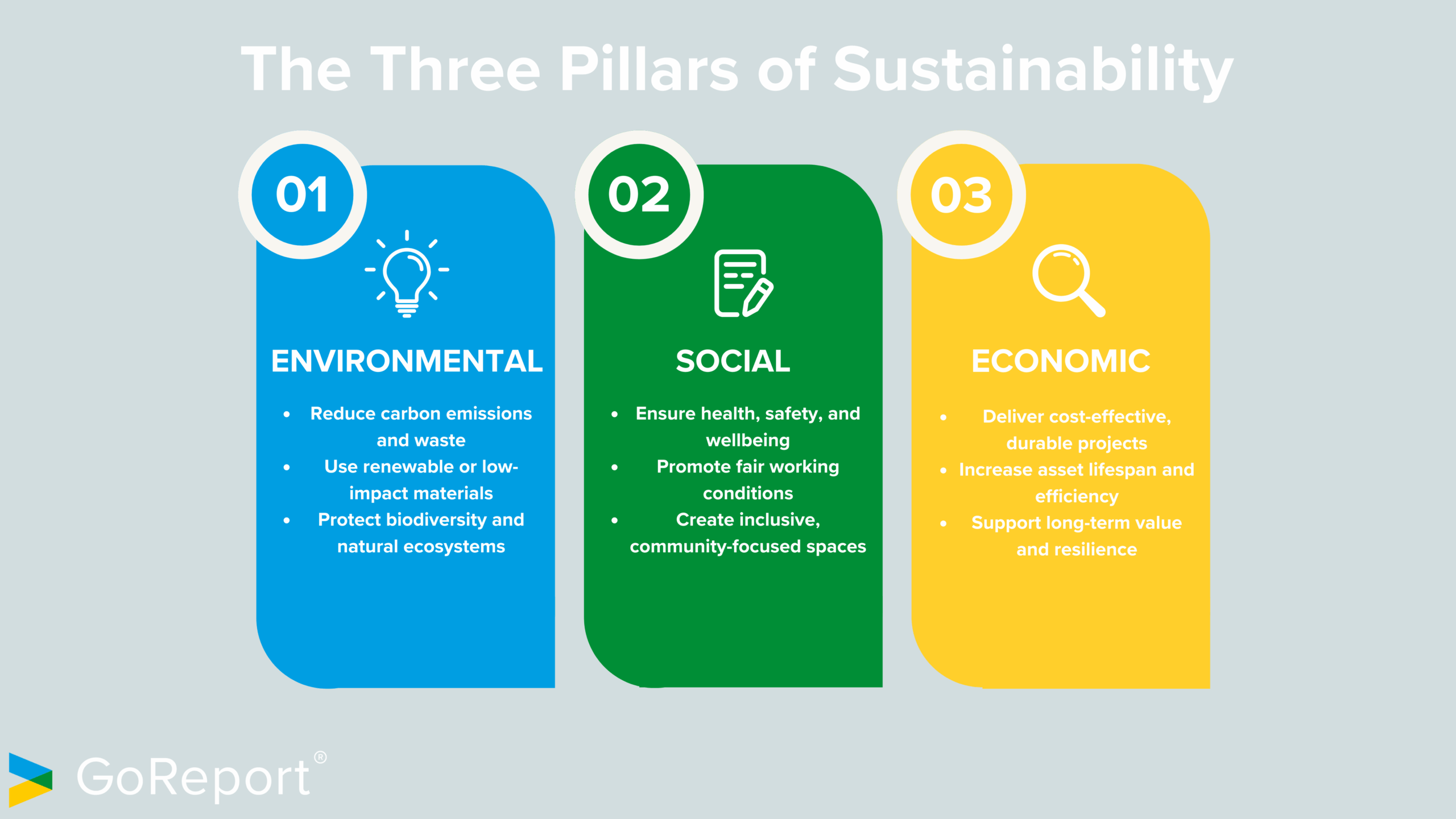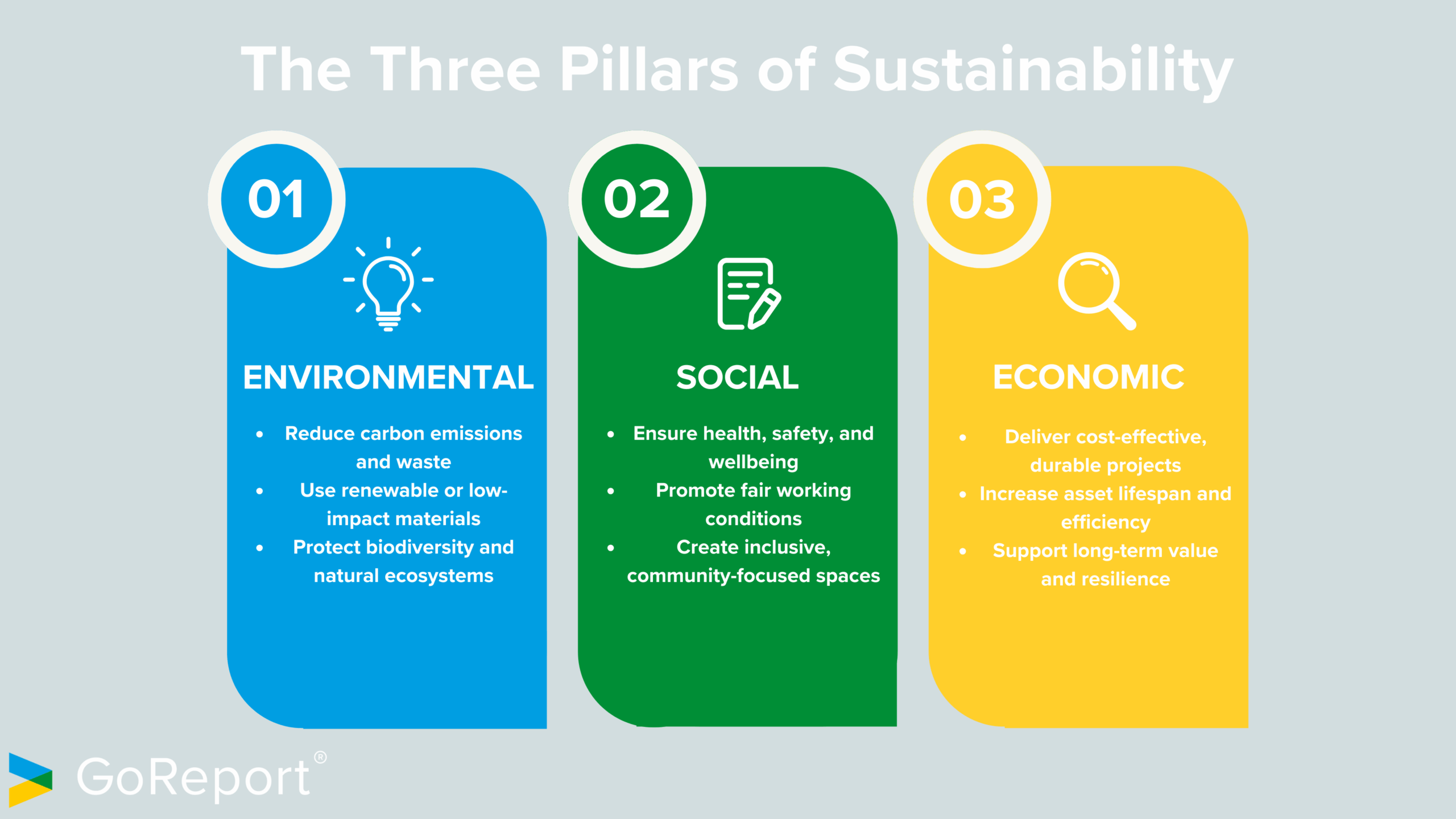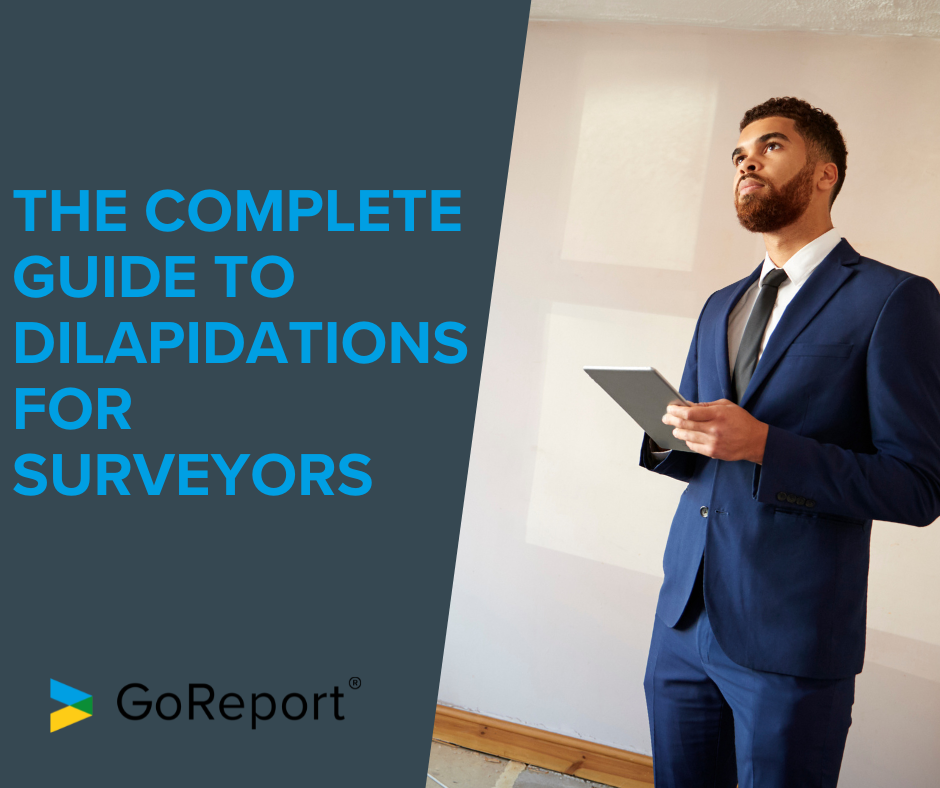Sustainable Construction Methods: Are They the Future?

Sustainable construction methods are transforming how buildings are designed, delivered, and maintained across the UK and Ireland. From low-carbon materials to modular off-site builds, these sustainable building construction methods are reshaping every stage of the construction process. For surveyors, the implications are significant.
As the industry moves toward net-zero targets and tighter carbon reporting standards, sustainability has become far more than an environmental talking point. It’s now a defining factor in project value, funding, and long-term viability. Clients, investors, and regulators increasingly expect measurable evidence of sustainability, not just good intentions. That means surveyors need to understand how these methods affect quality, cost, and compliance.
For many professionals, this raises questions. Are modern methods of construction sustainability really practical at scale? How do they compare to traditional techniques in cost and performance? And what exactly should surveyors be looking for when assessing a building’s sustainability credentials?
This guide explores what sustainable construction methods actually mean in practice, how they’re changing the surveying profession, and how digital tools can help you keep pace.
Contents
-
What Are Sustainable Construction Methods?
-
Why Sustainability Matters for Surveyors
-
Key Sustainable Building Construction Methods
-
The Surveyor’s Role in Sustainable Construction
-
Challenges and Barriers to Adoption
-
Is the Future Really Sustainable Construction?
-
How Surveyors Can Get Started
-
FAQ
-
Conclusion and Next Step
What Are Sustainable Construction Methods?
Sustainable construction means building in a way that minimises environmental impact, reduces waste, and supports social and economic wellbeing. It’s not just about energy efficiency but about creating buildings that are resilient, resource-efficient, and built to last.
According to the UK Green Building Council, sustainability covers everything from materials and waste management to biodiversity and long-term building performance.
The Three Pillars of Sustainability


-
Environmental: Reducing waste, emissions, and energy use.
-
Social: Supporting health, safety, and community wellbeing.
-
Economic: Delivering cost-effective buildings that retain value.
Many of today’s modern methods of construction (MMC) help meet these goals through improved precision, less waste, and faster delivery.
Why Sustainability Matters for Surveyors
Sustainability now shapes how buildings are valued, financed, and insured. For commercial surveyors, understanding sustainable methods is vital for accurate reporting and informed client advice.
Key reasons it matters:
-
Regulation and compliance: The UK built environment contributes roughly a quarter of national carbon emissions, so sustainable practices are now a compliance issue.
-
Market value: Sustainable buildings often achieve higher yields and lower vacancy rates.
-
Risk reduction: Lower lifecycle costs, reduced defects, and better resilience to regulation.
-
Client demand: Investors and occupiers expect evidence-based sustainability credentials.
-
Future-proofing: Sustainable buildings tend to retain value in a carbon-conscious market.
Surveyors who understand these dynamics position themselves as trusted advisors in a rapidly evolving industry.
Key Sustainable Building Construction Methods
So, what do sustainable construction methods actually look like on site? It’s not all futuristic tech and timber towers. In reality, it’s about smarter ways of building — methods that save time, cut waste, and create better-performing spaces for decades to come.
Modern Methods of Construction (MMC)
MMC includes prefabrication, modular builds, and off-site manufacturing. These methods streamline production and reduce waste by building components in controlled factory environments.
Benefits:
-
Faster project delivery
-
Higher build quality
-
Less material waste
Surveyors should consider how MMC affects valuation, lifecycle costs, and risk.
Low-Embodied Carbon Materials
Embodied carbon refers to the emissions generated during material extraction, manufacturing, and transport. Lowering it is essential for sustainable development.
Examples:
-
Recycled steel and reclaimed aggregates
-
Low-carbon concrete and geopolymer blends
Surveyors can assess whether sustainability claims are supported by documentation such as life cycle assessments (LCAs).
Circular Economy and Waste Reduction
Sustainable construction also focuses on making the most of what already exists. The UK construction sector produces around 100 million tonnes of waste each year, so reuse and recycling are vital.
Core principles:
-
Designing for adaptability and disassembly
-
Prioritising reclaimed and recyclable materials
-
Tracking and reporting waste management
For more on sustainability checks, read our article on ‘[What Is Environmental Due Diligence?’.
Off-Site and Modular Construction
Off-site fabrication allows components to be produced under consistent factory conditions and assembled on-site.
Advantages:
-
Reduced waste and emissions
-
Shorter construction timelines
-
Improved quality assurance
Surveyors should evaluate factory production standards, logistics, and long-term durability.
Mass Timber and Biogenic Materials
Mass timber, such as cross-laminated timber (CLT), is a renewable material that locks in carbon and delivers excellent strength-to-weight ratios.
Considerations:
-
Source timber from FSC or PEFC-certified suppliers
-
Review fire and acoustic performance
-
Check maintenance and protection requirements
Each of these sustainable construction methods brings unique benefits and new considerations for surveyors. Whether it’s assessing the durability of mass timber, verifying supply chain transparency, or reporting on the lifecycle costs of modular builds, understanding how these techniques work in practice is becoming a vital part of professional expertise.
The Surveyor’s Role in Sustainable Construction
Despite what you may think, sustainability isn’t just for architects and engineers. Surveyors play a vital part in verifying claims, identifying risk, and advising on the long-term value of sustainable methods.
How surveyors contribute:
-
Valuation: Recognising sustainability as a factor in asset value
-
Condition reporting: Identifying durability and material risks
-
Due diligence: Checking documentation, EPDs, technical due diligence and compliance
-
Advisory: Guiding clients on sustainable options and lifecycle costs
Accurate digital data capture through digital tools and apps like GoReport helps surveyors document sustainability evidence efficiently and reliably.
Challenges and Barriers
Like most things, utilising sustainable construction methods isn’t without obstacles. Common challenges include:
-
Resistance to change in traditional construction practices
-
Perceived higher upfront costs
-
Skills shortages across supply chains
-
Gaps in sustainability documentation
-
Complex or shifting regulatory standards
Understanding these barriers allows surveyors to support realistic, evidence-based sustainability decisions.
Is the Future Really Sustainable Construction?
All signs point to yes.
Sustainable construction methods are now embedded in national policy, investor expectations, and client procurement standards. The push for net-zero buildings is accelerating innovation across every sector.
Drivers include:
-
UK net-zero legislation and Building Safety Act reforms
-
Market appetite for green-certified assets
-
Technological progress in materials and off-site methods
-
A growing emphasis on transparency and carbon reporting
That said, not every project can use all sustainable methods immediately. The future likely lies in a hybrid approach, blending proven techniques with sustainable innovation.
How Surveyors Can Get Started
Here’s how to build sustainability into your workflow:
-
Review which construction methods were used on each project
-
Verify material credentials (EPDs, LCAs, supplier transparency)
-
Assess waste reduction and reuse strategies
-
Evaluate lifecycle costs and maintenance needs
-
Identify regulatory risks and compliance requirements
-
Advise clients on both opportunities and limitations
-
Use GoReport to collect, verify, and store sustainability data efficiently
You can book a free demo to see how GoReport streamlines sustainability reporting and environmental due diligence.
FAQ
What are modern methods of construction and why do they matter?
They involve modular builds and off-site manufacturing that reduce waste, shorten timelines, and improve build quality – key pillars of modern construction sustainability.
Are sustainable methods more expensive?
Upfront costs can be higher, but lifecycle savings in energy, maintenance, and risk typically outweigh them.
How do surveyors measure embodied carbon?
By reviewing life cycle assessments (LCAs), Environmental Product Declarations, and supplier emissions data.
What is the circular economy in construction?
It’s about designing buildings for reuse and recycling to minimise waste and resource extraction.
What is the most sustainable construction type?
There isn’t a single “most sustainable” construction type, as it depends on the project’s scale, materials, and purpose. However, timber-based and modular construction are often among the most sustainable. Mass timber (like cross-laminated timber) stores carbon rather than emitting it, while modular and off-site construction reduce waste, energy use, and on-site disruption. Combining these methods with efficient design and renewable materials typically achieves the strongest sustainability outcomes.
What is an eco in construction?
In construction, the term eco usually refers to environmentally friendly practices, materials, or technologies designed to lower a building’s environmental footprint. This might include using recycled materials, improving energy efficiency, reducing water consumption, or sourcing renewable energy. An eco-building focuses on minimising waste and carbon emissions throughout its entire lifecycle — from design and build to operation and demolition.








